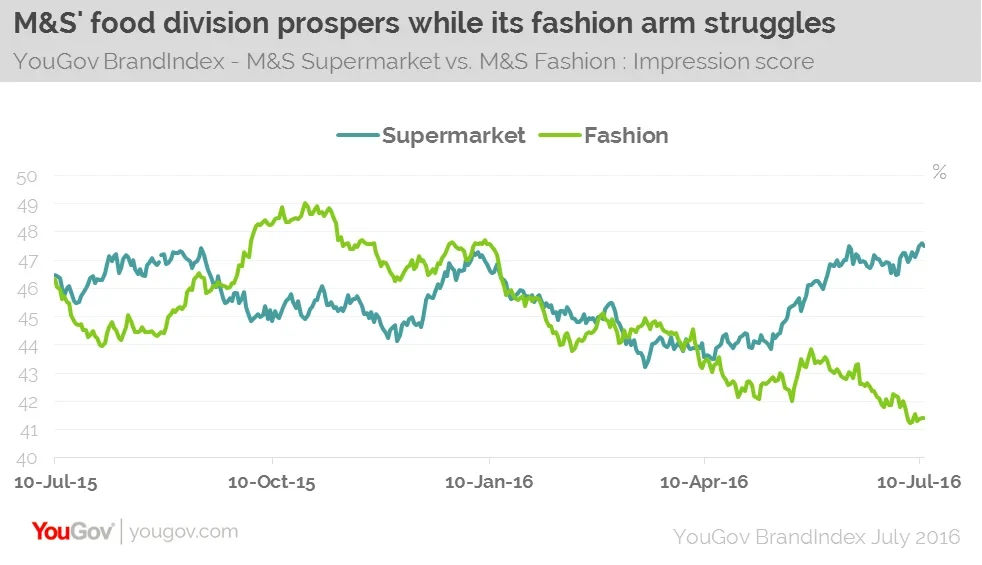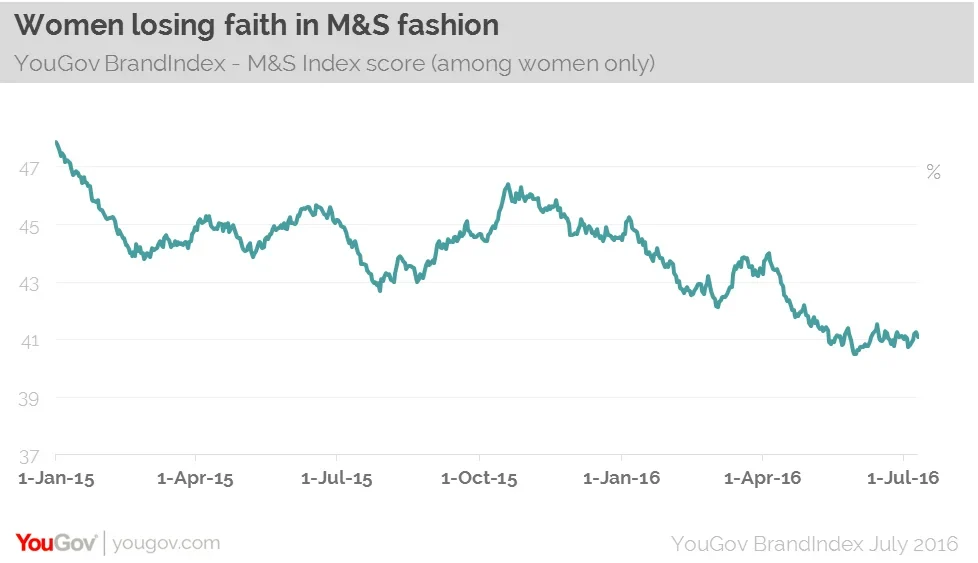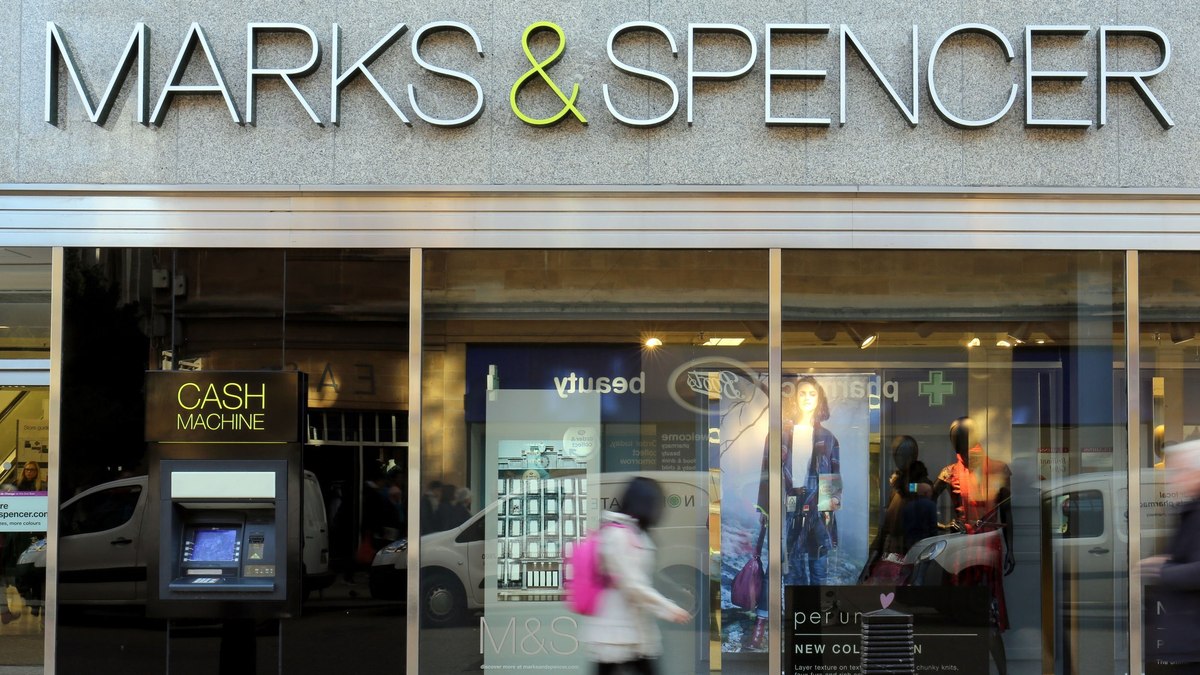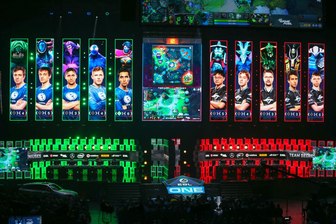M&S has announced that like-for-like sales at its fashion arm fell by 8.9% in the first quarter. This is its biggest fall in clothes sales for a decade.
In recent years the brand has tried various strategies to bolster this stuttering part of its business, with one of its most recent incarnations featuring a fashion line from model Alexa Chung.
Various causes have been put forward to explain away the results. One blamed poor weather denting demand for summer clothes, as well as wider retail trading trends that are squeezing the market. To try and combat this M&S has run fewer promotions and lowered prices.
Fashion vs. Food
Increasingly, Marks and Spencer is becoming of brand of contrasts. Its food and drink business is performing resolutely while the fashion arm is beset by problems. Consumers’ diverging impressions of the two M&S brands are clear. The current Impression score for the supermarket section of M&S is +48 compared to +41 for fashion.

Why would the two parts of M&S perform so differently? It’s apparent that the supermarket section appeals to a much wider demographic and powerful and memorable adverts have set apart the image of M&S as a supermarket in the eyes of the public.
While it’s clear what M&S food represents to consumers, this may not be true for its clothing arm, which has been trying to straddle two different stalls over the past few years – its traditional, older consumers and the newer, younger shoppers it is trying to lure in with its campaigns.
Explaining the fashion struggles
YouGov BrandIndex data points to how Marks and Spencer’s clothing fortunes have dipped.
The Index score for M&S fashion among all respondents has fallen from +44 in January 2015, to +38 eighteen months later. While the brand is still much loved and has a strong reputation, there seems to have been a downward shift in opinion.

Company bosses will of course be desperate to learn how they can bring back the customers they have lost. Among female former customers, M&S fashion’s Impression score has declined from +52 at the turn of the year, to +45 now - the lowest it has been in that time. This indicates that the brand’s current approach is not doing enough to retain those that would be open to shopping at the store.
Can M&S turn it around?
As buying habits change it may be that M&S has to accept that the rise of retailers such as H&M and Zara – as well as online competitors such as Asos - is irreversible. Its underlying problems do not seem to be solved by changing the brand’s personnel or unveiling a new fashion range, the overriding problem is not solved.
Marks and Spencer has a dilemma: risk alienating its traditional market with new and innovative strategy, or go back to the basics that those customers loved it for in the first place. An attempt to do both will surely do nothing to heal its current ills.
Another option is to pour even greater resources into the food division, as that is the part of the business that company bosses can currently rely on to deliver positive results.
Image PA











